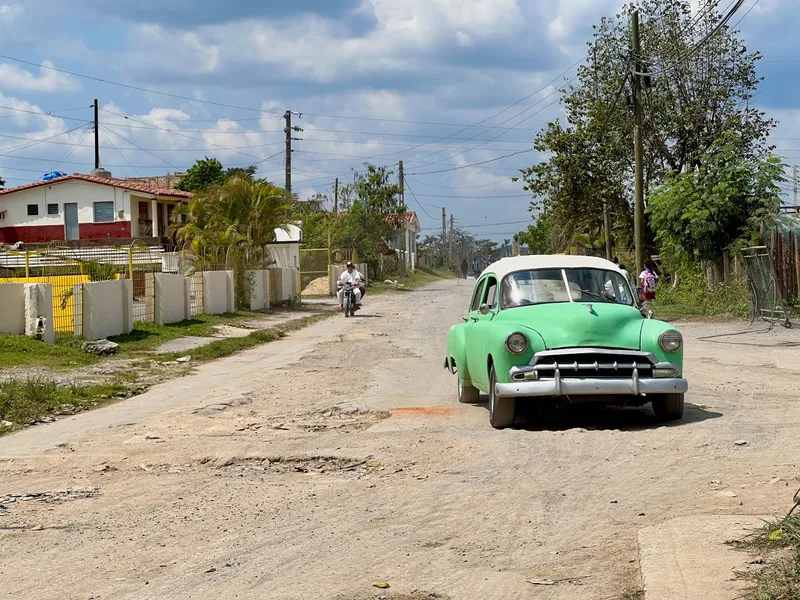You can always visit only Havana and not bother thinking about transportation. However, there’s no point in visiting Cuba if you only stay in Havana. In our opinion, Viñales is a must-see in your Cuban adventure. While not as impressive as Viñales, Trinidad has a different vibe than Viñales and Havana, and it’s worth exploring for a wholesome journey in Cuba.
Traveling the longer distances are those that worry everybody traveling to Cuba. What options do we have to get from Havana to Viñales, Trinidad, and then back to Havana?
Car Rental
Car renting in general while traveling is not an option for everyone. Some people don’t drive, others don’t want to drive while traveling, and others find it more immersive to use other means of transportation. If you’re one of these people, then you can skip this section.
Renting a car is usually the most convenient, comfortable, and fastest way to get from place to place while traveling. It offers you the flexibility to make your own schedule as you please, stop wherever you want, when you want, and not have to wait for anyone else. However, it comes with a cost disadvantage by being the most expensive transportation option. This is also true in Cuba. Renting a car in Cuba is expensive, and it comes with other hassles as well.
Renting Process
Cuba has a reputation for not being well connected to the internet. Not all car rental companies are listed on the internet for you to make a booking, and those that are have a terrible website. Adding to this issue are the numerous fake websites that want to scam you. It is pretty hard to make a difference between a real car rental website and a fake one that wants to scam you.
You won’t be renting a vintage car. Those are not for tourists. The government has a special fleet for tourist car rental, and all car rental companies access the same fleet of cars. When you have multiple different car rental agencies working with the same fleet of cars, you can imagine that many things can go wrong in their booking system. Even if you book a car, that doesn’t necessarily mean that a car will be available for you for sure.
Remember that you are in Cuba, customer service means a completely different thing in Cuba than what you would expect. In a communist country, employees don’t worry that much about being fired for doing a terrible job. Their main interest while doing their job is to best serve their personal needs and interests, before serving you. If there’s a shortage of available cars, and multiple tourists waiting to get a car, then the tourist who better knows to pay something extra to the employees of the car rental agency is the one that will get the car faster. If you weren’t born in a former communist country, then you will fail miserably at this. When picking up your rented car, you have to plan your day with room for error. You might be lucky and get the car almost immediately, but you might also have to wait for a few hours to get a car. There’s nowhere to make a complaint or receive compensation for your inconvenience.
The car models available for rent in Cuba are mostly from Asian manufacturers like Geely, Hyundai, and Kia, but you need to consider that you might not get the car you booked. These cars are not very new, but not too old either. However, there are limited spare parts for car repairs in Cuba, so their technical state can be questionable. They also don’t bother cleaning the car’s interior, so you might want to be prepared with some wet wipes.
In the end, it all boils down to luck and skill in dealing with a communist system. Once you have the rented car, let’s talk a bit about the roads and gas stations.
Roads & Gas Stations
Roads in Cuba are a great mystery for us. Outside the cities and towns, there are very few cars. You will very rarely encounter other cars while driving between Viñales, Havana, and Trinidad. I believe we never seen something like this in our entire life. However, the main roads between larger cities, which are the equivalent of a “highway”, are wide, with 2 or 3 lanes on each side separated by green grass. It might not seem much for our daily lives, but here we are talking about roads used by very few cars.
Now don’t imagine that the asphalt on these roads is outstandingly good. These are old roads, but still good for their needs with no potholes. Once you get off the “highway”, smaller roads are a different story. They’re bumpy, with potholes, and without any markings in most places. Even the road signs can be a bit confusing, just take a look at the STOP (PARE) sign below.
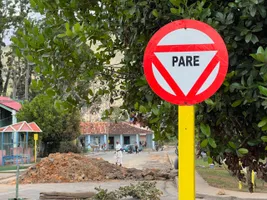
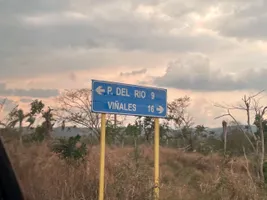
Direction signs are also a challenge. Make sure to have downloaded offline maps or have a physical map with you. Even our Viazul bus driver took a wrong turn on the way from Havana to Trinidad and had to turn back. When talking with one of our taxi drivers he laughed saying “A driver that doesn’t know the road”. In other words, drivers must know the road, they don’t rely on direction signs.
As a communist country, there are multiple, quite frequent police control points along the way. Everybody has to reduce their speed and drive slowly while passing these checkpoints. Some cars will get stopped, others won’t.
Refueling and gas stations are a complete mess. After reading a lot on the internet about gas shortages, we learned from locals that there is always a special gas reserve for tourists. When there is no gas for locals, there will be some gas for tourists. However, don’t forget that, in a communist country, there might be a lot of issues about how that reserve is handled, who controls it, and to whom they want to give it. As long as they’re not at any risk, they’ll put their interest above yours.

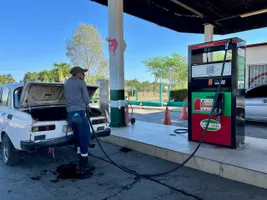
Queueing at gas stations is real. We’ve seen lines so long that we wouldn’t have guessed what they were if a local hadn’t told us. He said that a long line usually takes between 1 and 2 hours, but there’s no guarantee that there’s any gas left when you get to the pump. Lining up at the gas station for hours is not the ideal way to spend your trip in Cuba. You also have to refuel when you can because you’ll find very few gas stations outside cities.
If the car rental hassle got you tired already, then let’s move on to the next means of transportation.
Colectivo
Colectivo is basically a taxi, but one in which you ride with other people as well. They are cheaper, may prove as a less boring ride with stories from locals, but are also less comfortable. If you are not the lucky one in the front seat, you will be squeezed between other passengers for hours. Colectivos don’t have AC, and they ride with the windows open, no matter the speed they are driving at. Besides the heat and the noise, you can even get windburn if you are sitting right in the air current at high speed.
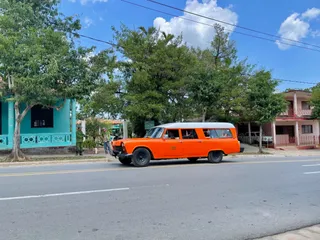
Colectivos usually depart at specific hours, but they need to occupy all their seats. Therefore, you need to make your plans based on the Colectivo schedule, make sure you go earlier to catch a seat, and wait long enough to get all seats occupied. The price is per seat, and it depends on how many seats a car has. If the Colectivo car is not full, the driver might consider the ride not worth it, and cancel it if the passengers don’t pay for the empty seats. In which case your price will go up, and even equal a private taxi. Considering all the above, and that most colectivos are older cars than private taxis, you might want to check out private taxis as well.
Private Taxi
Private taxis are the most comfortable, convenient, but also expensive means of transportation if you don’t plan to rent a car. While the price per day for renting a car might be cheaper than what you have to pay for a taxi on a day, don’t forget to consider that you also have to pay for the rented car for the days on which you don’t use it. For example, if you go from Havana to Viñales, spend 2 full days in Viñales, and then go back to Havana, you will have to pay 4 days of car rental which will, in most cases, exceed the price of the private taxi.
Some private taxis have AC, others don’t. Most private taxis that ride on long distances are better cars, which also have AC. However, always ask for a taxi with AC when you make the arrangements. The drivers in Cuba are used to driving with the windows open, so they might do so with you as well even if they have AC. Politely ask them to close the window and turn the AC on.
Taxi owners are great communication partners if you know some Spanish. You can hear many stories from them, and they tend to care more about their passengers than bus or colectivo drivers. Both, colectivos and private taxis can be easily arranged through your host. Never hesitate to tell them what you need and they will arrange it for you.
Busses: Viazul
We heard and read many positive experiences about the Viazul before our trip to Cuba. We were set to try it out. The buses used by Viazul are modern compared to other buses that you see all around Cuba. This gave the positive stories even more credibility.


However, we had such a terrible experience with the Viazul, that we took a private taxi on our return trip, paying more and losing the money already paid for the bus ticket.
Tickets
Booking Viazul tickets is simple and straightforward. Just go to the trueViazul website and choose the tickets that you need, and you can even pay for them online. Don’t forget to choose extra suitcases if you have any. You will then receive an email in Spanish with a voucher that contains details about your booking. With this voucher, you will have to go to the departure bus terminal and exchange it for your real bus ticket.
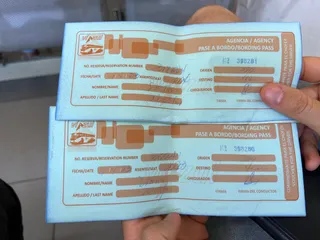
Unfortunately, you have to be at the bus terminal at least 60 minutes before the departure time to claim your ticket. After this time, your booking is no longer kept, and it can be sold to anyone showing up without a booking. We strongly recommend you print the voucher before leaving home. With the voucher printed, you can ask anyone in the terminal for directions on where you have to go and they will guide you. Once you pick up your tickets, go drop your suitcases (if you have any), and then feel free to wander around, do some people-watching, go to the waiting room, or grab something to eat if you can find anything to eat. You can read more about the false food difficulties that we faced on the road.
The Seats
In the waiting room pay attention to all announcements. Once you hear that your bus is ready to embark, make your way to the bus and try to be amongst the first to hop on. Why? Because a lot of the seats are broken and maybe you will be able to choose where you sit. There is no seat number on your ticket, you can seat anywhere you want.

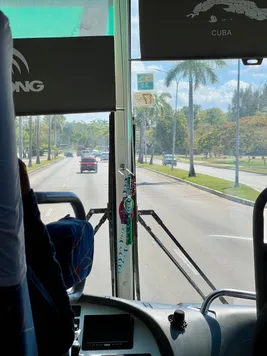
How to choose a seat? The seats in the Viazul busses recline a lot, perhaps too much. If you recline your seat’s backrest all the way down to an almost horizontal position you will be sitting in the lap of the passenger behind you. It is extremely awkward and uncomfortable for both you and the person behind you.
Let’s say that you don’t plan to recline your seat that much. The problem is that some seats are broken, and they will either not recline enough, or they will not stay in an upright position. Even if you manually lift the backrest, it will go down when you lean on it, maybe not all the way down, but too much. If your seat doesn’t recline enough, but the seat in front of you won’t stay upright, then you will have a very unpleasant journey. This is why you want to get on the bus at the beginning and choose your seat. How can you be able to test seats when people keep coming in the bus behind you? Beats me!
There are other bus stops along the way and people might get off the bus at any point. You can always change seats if yours is uncomfortable.
The AC
We heard so many stories about how cold it is on the Viazul busses, and that you need to keep a jacket within reach. We were prepared, but it never happened. We traveled for 7 hours with the Viazul and had absolutely no AC. It was extremely hot, people were sweating and starting to smell. It was just awful. We guess that the drivers didn’t turn the AC on to save some fuel. Right before reaching Trinidad, they stopped at the gas station, but the gas went in some petrol canisters, not in the bus.
Duration, Stops and Detours
Viazul bus rides take almost double the time you would normally ride with a car. With a private taxi, we left Trinidad at 9:00, and got to Old Havana just before 13:00. That is a less than 4 hours drive. With the Viazul, we left Havana at 15:00, and arrived in Trinidad just after 22:00. That is 7 hours, almost double the time we made with the taxi.
Part of the reason why the Viazul makes so much more time is the route it takes. The bus has multiple stops along the way, and on the route between Havana and Trinidad, it will also pass through Playa Larga and Playa Giron. That is a detour, but not a very long one.
The bus also takes a longer lunch/dinner break. Our bus stopped at Restaurant Pio Cua, where we had 30 minutes to eat something and go to the toilet. Some hot pasta dishes were already waiting for the drivers who probably called in advance. For us, the passengers, there was no time to order and wait for cooked food. We just stuck to the sandwiches, we were lucky enough to place the order before most people on the bus.

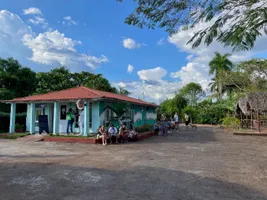
While we were eating our sandwich we overheard the restaurant employee that they only had 5 more sandwiches. I have no idea what everyone else ate that day. The toilet is paid for even if you buy food and drinks from the restaurant, and overall I had the feeling that the sole purpose of that restaurant was for Viazul busses to stop with tourists.
Besides these stops, our bus made few other detours, unnecessary for us passengers. The drivers had some personal business to take care of. Once they stopped to pick up some family members. Then they stopped somewhere on the side of the road were several cars without license plates where waiting for them to load some white bags on the bus. Then they stopped again to drop the white bags. And then they stopped again at a gas station to fill some petrol canisters, but not the bus.
If you plan to connect 2 different Viazul buses, then forget about it. There are high chances that you will never get in time for the second one. We traveled in one day from Viñales to Trinidad, but we took a taxi from Viñales to Havana, and then the Viazul.
The Crab Migration
The most traumatising experience is the killing of thousands of crabs. Every year in Cuba, in the Bay of Pigs, you can witness the migration of millions of crabs that leave the forest, cross the street, and head to the water. The road is covered with red crabs just like a road covered with autumn leaves. This migration doesn’t happen during the day when the sun is hot, but rather at sunset when the temperature is more bearable. In any developed country, that round would have been closed to protect the local fauna for a few hours each day. In some countries, some roads get closed for an entire month for this reason. But not in Cuba. We’ve been crushing crabs for kilometers. If this sight is disturbing, the bad news is that you could also hear it even if you were not looking.
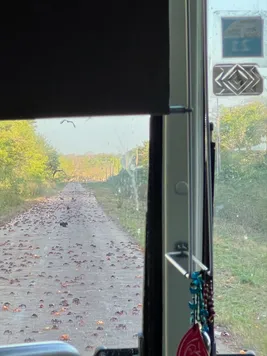
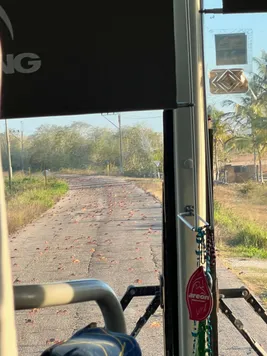
We had booked a round-trip ticket with the Viazul, but we were no longer able to get a refund for our return trip. Refunds are only possible at least 72 hours before the departure time for a 10% fee.
Local Taxi
Inside the cities, there are some unusual taxis: horse-powered taxis and bicycle taxis. In Viñales horse-powered carriages were a common sight, and they even had the Taxi sign on them.
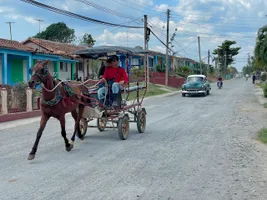
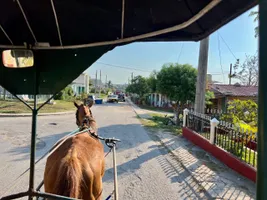
In Trinidad, bicycle taxis were the norm. The bike had some sort of carriage attached to it, so the “driver” would be in front pedaling, while the passengers would sit on the rear bench.
Vintage Cars
The vintage cars of Havana indeed look very nice on the streets. They create this retro atmosphere that we love about Havana, and they are also on all the postcards. However, don’t expect that you would be driving one of those. These classic cars are just for city tours. They are not used for transportation purposes.
Some people really own old cars in Cuba, but they have no means to repair them or repaint them. You will see plenty of these cars on the streets as well.
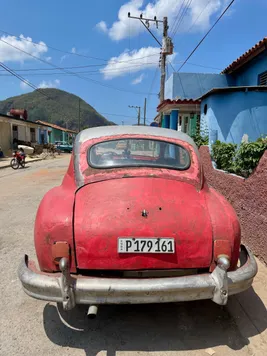
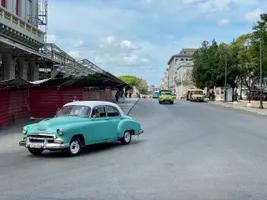
The shiny vintage cars that take tourists for a ride have been specially restored for tourism, and the driver is just the driver, not the owner. These cars look good on the surface, but underneath they are almost breaking apart. You will see a lot of oil spills on the ground where those pretty cars have been parked.
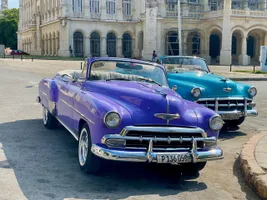

We tend to think of old cars as vintage cars that are collectibles worth a lot of money. This is probably why vintage cars in Cuba are such a big hit with tourists. In reality, for Cubanos, vintage cars are just old trashy cars, but they’ve figured out that one man’s trash is another man’s treasure.
Cycling
You hear me right. You can travel around Cuba by bicycle, but you would need some help. There are travel agencies that offer cycling trips to Cuba. They carry your luggage while you cycle your way through the country. We were a bit concerned about cycling so much on the streets when we saw this trip, but after false cycling 45 km (28 miles) in one day while in Viñales, we realised how empty the roads are in Cuba.
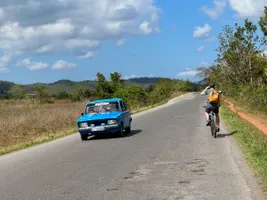
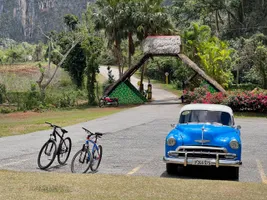
Biking Cuba Tour
If you are looking for a group to tag along and have your luggage carried for you while you bike, then our favorite small group travel company is trueG Adventure, and it is our go-to option for destinations where we prefer to be with a guide that handles everything for us.
We planned our trip to Cuba with a car rental. After trying to book a car, and hitting multiple fake or untrustworthy websites our morale went down. After everything you hear about the roads, and gas shortages in Cuba, not having a reliable renting source really put us off. We talked with our hosts, arranged some taxis, booked Viazul tickets, and that was it. We wanted to make the most out of our limited time in Cuba instead of wasting time with the hassle of renting a car. I still believe that renting a car is a better way to explore the island, but you must have enough time reserved for it, which we didn’t.
Now that you have transportation figured out, explore our entire range of articles about places to see and activities to do in Cuba. Learn how to handle money, make payments, and how to stay safe during your entire trip:
 Travelfoss
Travelfoss
Related Travel Articles
- What You Should Know Before Traveling to Cuba
- Trinidad Itinerary: What to do in 2 (or more) Days
- Discovering Trinidad, Cuba: Exciting Things to See and Do
- Trinidad Nature Escapes: Playa Ancón, Topes de Collantes, and Valle de los Ingenios
- 7 Unique Travel Destinations for 2024
- Trinidad, Cuba: Heritage, History, and Hidden Delights Revealed
- Unmasking the True Cuba Experience and Societal Realities
- Top things to do in Viñales, Cuba: Activities and Experiences You Can't Miss
- Traveling to Viñales: What You Need to Know Before You Go
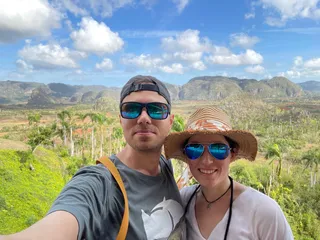
Writing free, independent and personal travel content since 2021. If you appreciate what we do, then you can return the favor by using the affiliate links below.
- Get your accommodations on Booking.com
- Buy your gear and gadgets from Amazon
- Book flights using Expedia
- Book activities on Get Your Guide
- Book guided trips on G Adventures
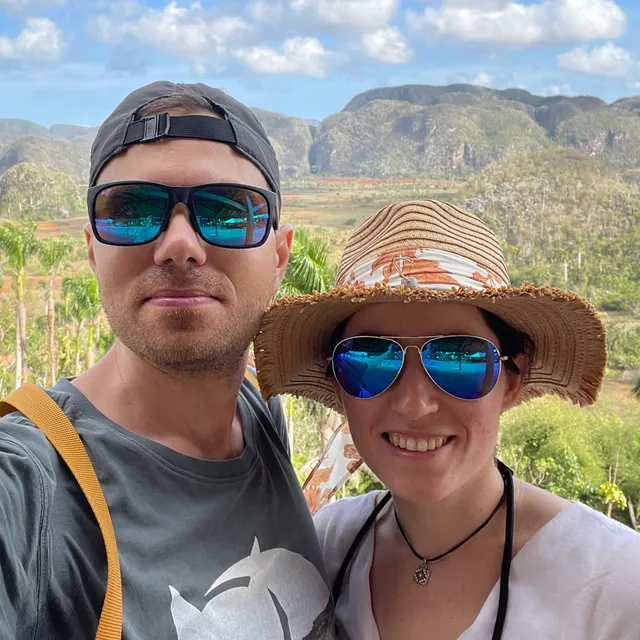
Writing free, independent and personal travel content since 2021. If you appreciate what we do, then you can return the favor by using the affiliate links below with no cost for you.
